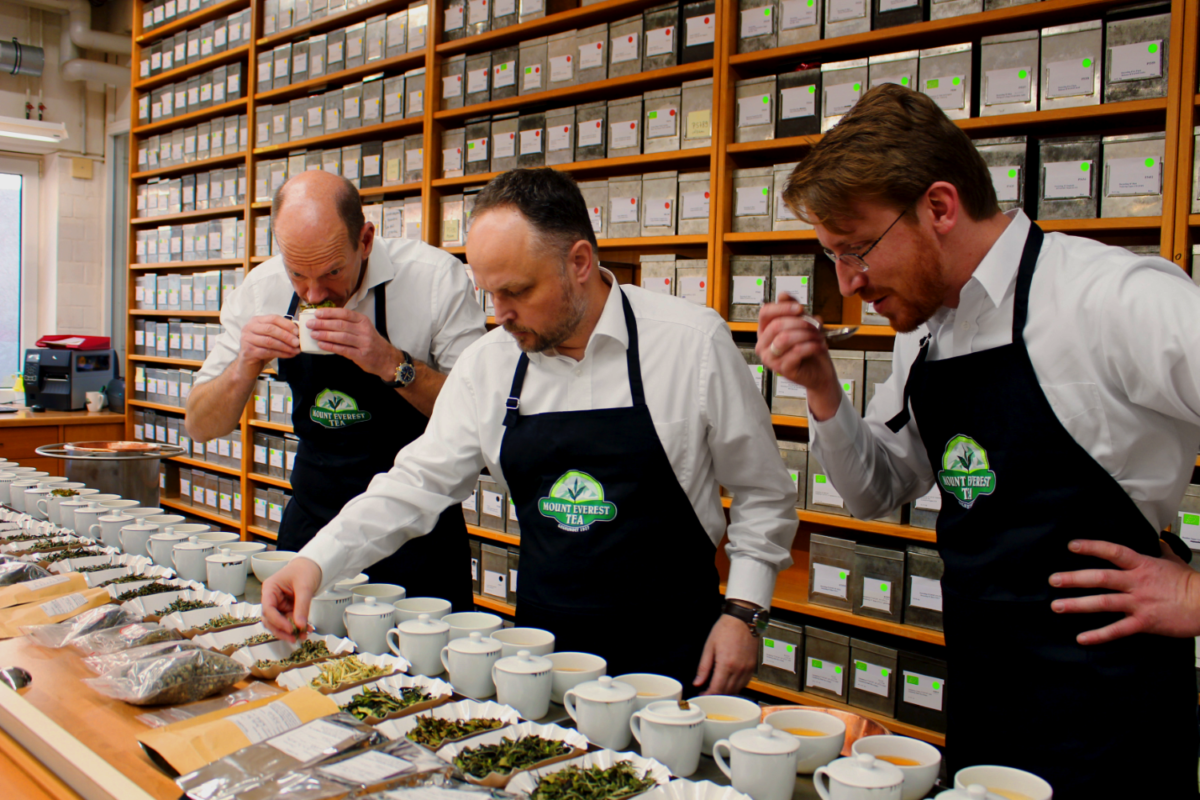
ELMSHORN, Germany
 Stefan Gieschke, 47, studied logistics and worked as a management assistant for freight forwarding and logistics in the 1990s. He first discovered the nuances of tea tasting as head of imports at Schwedt & Gesing interTee Handelsgesellschaft mbH, at those times a small fine tea trading company in his hometown of Hamburg, Germany. From 1995 to 2000, Stefan trained to become a tea taster under Hanspeter Gesing and Herrn Karl-Heinz Schwedt. Stefan completed a Bachelor of Arts in Professional Trade and Commerce from 1998-2000 and continued to work for interTee as a Tea Taster and soon after his tea training as a Senior Tea Taster until 2017. In 2017 Stefan joined Kirchner, Fischer & Co. GmbH (founded in 1793) & Mount Everest Tea Company GmbH in Elmshorn (founded in 1927) as a Senior Tea Taster and was named Managing Director in 2020.
Stefan Gieschke, 47, studied logistics and worked as a management assistant for freight forwarding and logistics in the 1990s. He first discovered the nuances of tea tasting as head of imports at Schwedt & Gesing interTee Handelsgesellschaft mbH, at those times a small fine tea trading company in his hometown of Hamburg, Germany. From 1995 to 2000, Stefan trained to become a tea taster under Hanspeter Gesing and Herrn Karl-Heinz Schwedt. Stefan completed a Bachelor of Arts in Professional Trade and Commerce from 1998-2000 and continued to work for interTee as a Tea Taster and soon after his tea training as a Senior Tea Taster until 2017. In 2017 Stefan joined Kirchner, Fischer & Co. GmbH (founded in 1793) & Mount Everest Tea Company GmbH in Elmshorn (founded in 1927) as a Senior Tea Taster and was named Managing Director in 2020.
Marten Verch: What did you do before working in tea? Was tea tasting a shift in what you initially thought to be doing as a career?
Stefan Gieschke: It all started in 1994 after completing my vocational training with an international specialist logistics company. After this valuable training, I joined a small tea company taking charge of their imports. I thought of pursuing my career in logistics, perhaps switching to a large shipping company. I didn’t know that the job of being a Tea Taster even existed.
Marten: When would you say you decided to pursue tea making/tea tasting as a professional skill? What first interested you about tasting?
Stefan: A year after I joined the company, a position became available in the purchasing department for raw materials. It was my first opportunity to taste what tasting was like. From the first day, tea caught my interest. Every day I secretly tasted the cups the tea tasters had already tasted. At first, I could not wrap my head around what the tea tasters found so special about this or that cup. Everything was bitter and much too strong for me. So I sneaked into the dark warehouse to create a blend of a mild fruit tea, for which I then developed several formulas according to my naïve ideas. What can I say – that evening, my whole life changed. My blends became the top sellers at the company. The next day, after the Tea Tasters tried the combinations, the owner of the company, who was also my mentor, insisted that I join the Tea Tasters when tasting teas from that day on. Numerous trips to the countries of origin followed, and I continued to expand my tea knowledge.
I had no idea how fascinating and multi-layered the tasks and possibilities of being a Tea Taster were. I call many colleagues in numerous countries my friends; we all share a passion for tea. Who would have ever thought that, at just 18 years old, I would never have dared to dream of this?
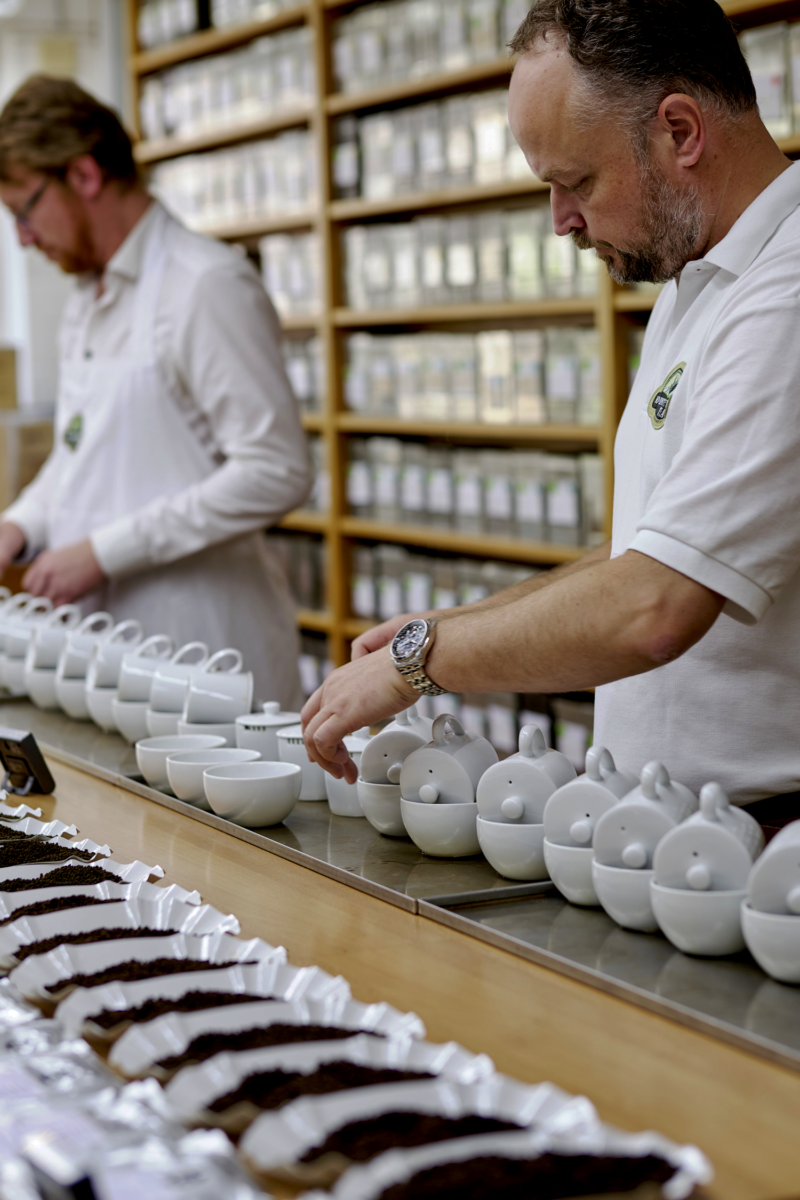
Marten: Are there some teas (tea styles) that resonate? Are there teas that you are better at describing and better appreciate, even if they are not your personal favorites? If so, why do you think this is the case?
Stefan: Here, we are dedicated to the highest tea qualities. Kirchner, Fischer & Co. GmbH was founded in 1793. It is the oldest tea-importing company in mainland Europe. For almost 230 years, we have traded teas with the world. We can say that all teas are well appreciated, are of high quality at a reasonable price, true to the markings on the traditional tea chests: “It pays to buy good tea” and “Good tea is better value.” In any case, organic teas continue to be the trend. Good organic teas are very much in demand. High-quality green teas from China, Japan, and Korea, in particular, are very much in vogue. Matcha teas are also experiencing increased demand again after a short breather.
Simple quality teas are easier to describe, as they come without exceptional complexity, much more inconspicuous and boring. It is easier to rate these teas. It is more demanding to do justice to the “good teas” in their characterization and description, to capture and describe the nuances accurately, and to do justice to all the work that goes into these teas. It is also crucial to find a price that does justice to the work that the tea pickers, the tea makers, and the garden management put in. Eventually, the price also needs to leave room for us, the importers, to sell these teas.
Marten: Which teas were initially the most challenging to you? Are they still daunting? Or have you made peace with them and reached a mutual understanding? How so?
Stefan: The biggest challenge was, and still is, highly unusual, almost extreme (at least to the European taste) specialties from Japan. One of them is Ume Kombucha, a powdered tea made from plum and kelp, which is rich in umami and sometimes mixed with sea salt and even beef. I haven’t seen these specialties in 20 years. It took me a great deal of effort to taste these teas and give a proper neutral evaluation even though I already had a few years of experience. Even today, these teas would still put me off.
Another category to which today I have a much better, even more, passionate relationship and understanding is the premium high-quality Chinese Pu’er teas. In my younger years, I could not acquire a taste for Pu’er teas. Today, this is entirely different. During my travels, I discovered Pu’er teas with multi-layered flavors ranging from walnut to dark chocolate to light plum and tobacco notes, something I would never have thought possible when I had my first cup of Pu’er.
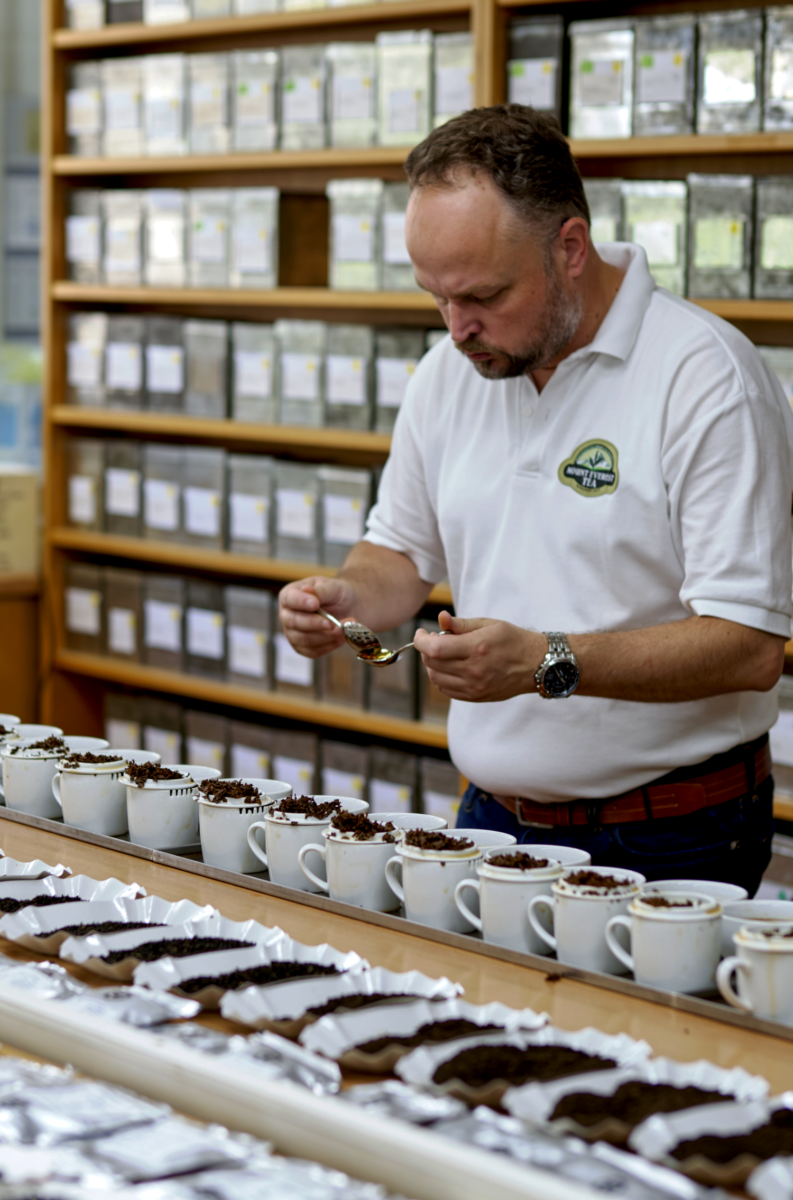
Marten: Will you share insights about how you developed your tea vocabulary with readers? What was the process like for you in going from identifying “something familiar” to perhaps relating it to a memorable experience or place to being able to put a specific term to it?
Stefan: Early in my career in the tea trade, I spent a lot of time trying to comprehend the evaluations of the senior tea tasters. At that time, there was no such thing as a tea school, let alone specific training to become a tea taster. As a result, I gained valuable experience during day-to-day operations building my tea knowledge and simultaneously my tea vocabulary along the way. The exchange with other tea tasters in the same company was invaluable, especially during trips. Questions such as “Why do you dislike this tea?” or “What do you particularly like about that tea?” helped to link sensory impressions with vocabulary in joint conversation.
Marten: Did you actively seek opportunities to build vocabulary? What were some of your exercises?
Stefan: Especially while traveling to the countries of origin, I have been proactively working to find out the meaning behind various tea vocabularies. Unfortunately, many of the terms found in the classic Tea Tasting Terms glossaries have limited application in the day-to-day operations of tea importers. This is because most teas traded in the West are already sorted out in the countries of origin. Visiting tea factories and auctions is a great opportunity to learn and practice many of these terms.
A great help can also be found in the Tea Flavour Wheel. Starting with a certain category, for example, “fruity” or “vegetal,” guides your way up to the finest nuances. At the same time, you build up your sensory memory, which helps you to assign and articulate certain sensory impressions.
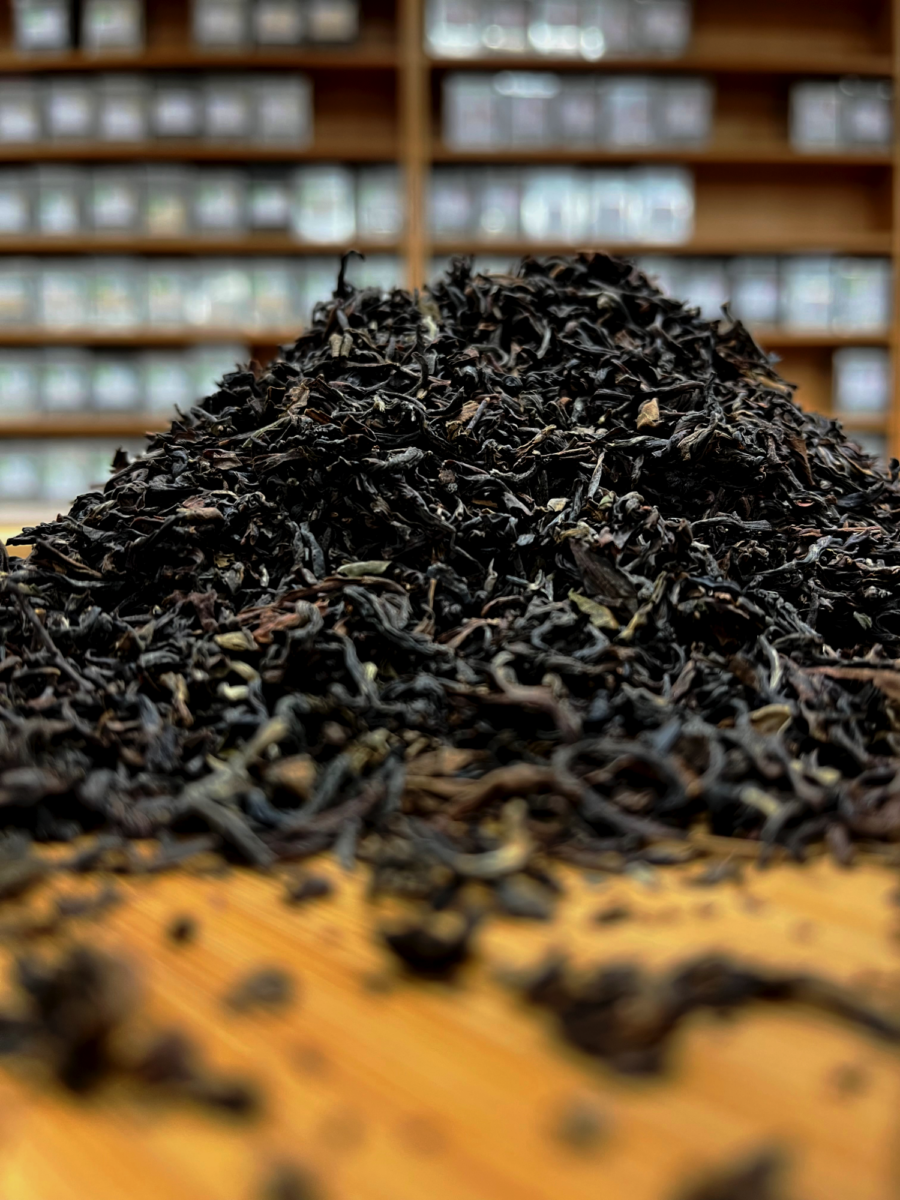
Marten: Is there an area of vocabulary you found easier and, similarly, a region you found more difficult? Some people get stuck on specific styles and struggle to evolve their vocabulary.
Stefan: Some areas are indeed easier to identify and put into words. In my case, these are especially those with whom I have more points of contact in everyday life. Partly even from childhood. Fruity aromas are among them. Woody notes are also easier to detect. I even find tobacco notes relatively easy to detect.
Spicy notes, on the other hand, are somewhat more difficult. Spices in themselves are a huge and diverse product world. Distinguishing between individual floral notes also requires a lot of experience.
Ultimately, it always depends on the environment in which one grows up. In India, for example, there are probably more points of contact with the diverse world of fruits and spices than in Europe.
Marten: What advice would you give consumers seeking to refine their taste in tea during this period when it is more challenging to sample teas at their local tea shop, at community festivals, and while dining?
Stefan: My advice is to start with purchasing high-quality teas. Be prepared to pay good money for great teas. Don’t store the teas alongside spices or coffee. When it comes to brewing the teas, pay attention to the quality of the water. Only use filtered water or soft bottled water. Never use a coffee pot or thermos for your tea. Eventually, you will want to use the same brewing techniques when sampling different teas to ensure comparability, adjust brewing parameters, and observe how the tea changes.
Tasting Notes
Darjeeling FTGFOP1 2nd flush Sungma Muscatel Organic DJ-101/2022
#P6168 Darjeeling FTGFOP1 2nd flush Sungma Muscatell Organic DJ-101/2022:
Origin: Jay Shree Tea & Industries Ltd, Kolkata, West Bengal, India
Altitude: 4,800-5,200 ft (1,400–1,600 m) above sea level.
Tea Maker: Anish Kabi (Senior Factory Assistant Manager)
Cultivar: 150 years old China & China Hybrid Seed Planted Cultivar
Dry leaves: The leaves are carefully processed, slightly open, and have a dark black to brown appearance with occasional green particles. The tea is interspersed with delicate silvery tips.
Liquor: Clear and bright infusion with a coppery/amber tone.
Aroma: Dry leaves smell like warm Northern German sourdough bread crust accompanied by fine nutty aromas. The infusion emits a lovely, sweet aroma reminiscent of sourdough bread, dark cocoa with subtle spicy tobacco notes, subtle floral lily of the valley, and distinct muscatel notes.
Process: Hand plucked. Fermentation Time: 2:30 hours, Dryer run through Time 26 Min, Dryer Temperature Inlet 248°F, outlet 160°F
Best Months: Harvested 18 May 2022. Processed 19 May 2022
Brew: Western Style – 1 tsp per cup – 95 degrees Celsius – 3 to 3.5 minutes
Cup: In the mouth, the tea tastes intense and is full of floral and spicy nuances with notes of tobacco, cedar, dark chocolate, and a distinct muscatel flavor. Typical 2nd flush character!
Personal notes: Spread over evenly gradual slopes facing the mesmerizing Mirik valley, Sungma and Turzum are some of Darjeeling’s most beautiful tea estates. It is famous for growing exclusive quality tea at high elevations and a cool and misty climate, with temperatures ranging from three degrees Celsius in winter to 28 degrees Celsius in summer and an annual rainfall of 2500 to 3000 mm from July to September. This tea is a perfect example of the exquisite qualities this estate proudly stands for after having experienced a very turbulent past, including a massive earthquake in 1934, the subsequent shift of the entire tea manufacturing operations to the Turzum tea estate, and the takeover by Jayshree Tea in 1933.
Purchase link: Kirchner, Fischer & Co. GmbH
Japan Gyokuro Kirishima, Kagoshima, Saemidori Organic
#P6158 Japan Gyokuro Kirishima, Kagoshima, Saemidori Organic:
Origin: Nishi Tea Factory, Makizono, Kirishima-City, Kagoshima Pref, Japan
Altitude: 980-1,320 ft (300–400 m) above sea level.
Tea Maker: unknown
Cultivar: Saemidori
Dry leaves: Even, clean, neatly rolled leaves of dark green color and needle-shaped leaves of the highest quality. Touching these velvety soft tea leaves is a pure hand-pleasing experience.
Liquor: Light yellow to jade-colored clear cup.
Aroma: Dry leaves have a fresh, soft green aroma that results from processing only the young and tender buds. Also, the scent of green seaweed (because of shading) is quite noticeable. The infusion appeals with sweet, pronounced veggie flavors and umami flavors accompanied by notes of cooked Brussels sprouts and fresh asparagus while notes of seaweed continue to evolve.
Process: Grown in volcanic ash soil, exceptionally rich in minerals, and shaded for 21 days before harvest.
Best Months: Harvested 3 May 2022
Brew: Western Style – 1 tsp per cup – 60-70 degrees Celsius – 2 minutes
Cup: The tea tastes sweet and velvety and captivates with multilayered veggie flavors, such as brussels sprouts and asparagus, accompanied by a pleasant umami note and subtle aromas of Vietnamese cinnamon, marzipan, and almond. Fresh aroma and subtle fruitiness thanks to the high mineral content of the soil.
Personal notes: Nishi’s tea plantation is in the mountains of Kirishima, where the climate is subtropical and the rainfalls abundant. Both are very beneficial for tea production. Kagoshima is an active volcanic region. You often hear the earth-shaking sound of a volcano in action. The deep fog characteristic of mountainous areas covers the entire area, making the temperature difference between morning and midday very intense, which is a perfect terroir for tea cultivation.
Purchase link: Kirchner, Fischer & Co. GmbH
Download: Mount Everest Tea Catalog (2022-2024)
Tea Market
Get More Value from Your Tea: BRU Maker One
+41794574278
Jacque's Organics
(647) 804-7263
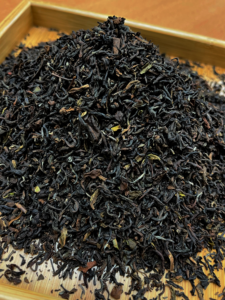
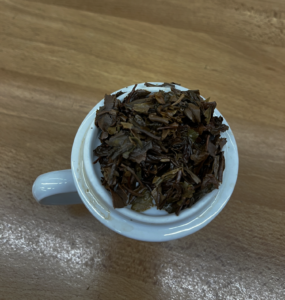

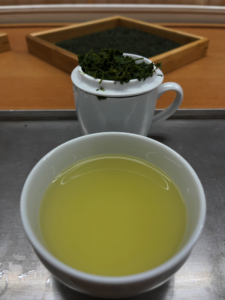
There is so much to learn in Tea. Even after 30 yrs. it’s an interesting to read the journey of Stefan Gieschke. Thanks for sharing.
Thanks for your comment! I’m happy you found interest in Stefan’s story 🙂
great article. It’s very important for the tea industry that what the tea tasters do.